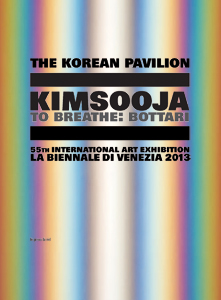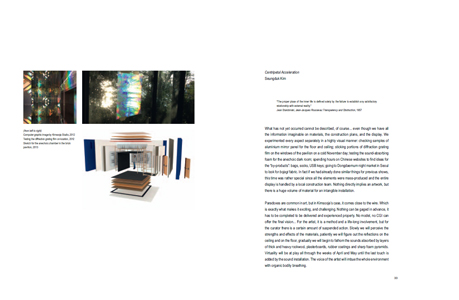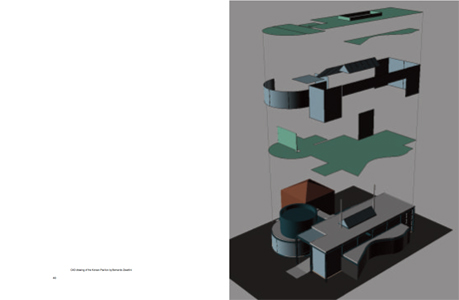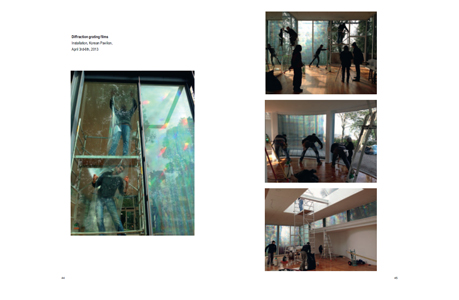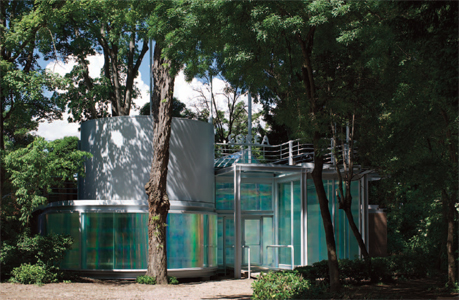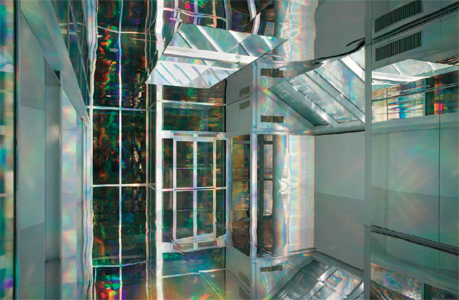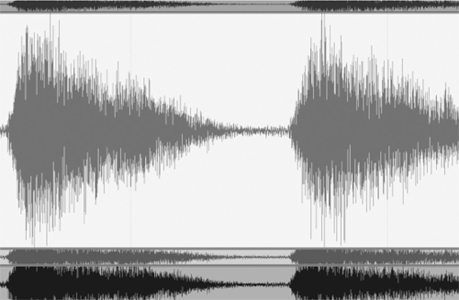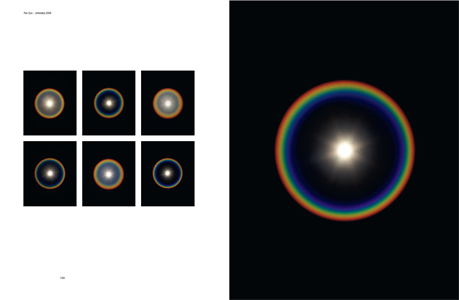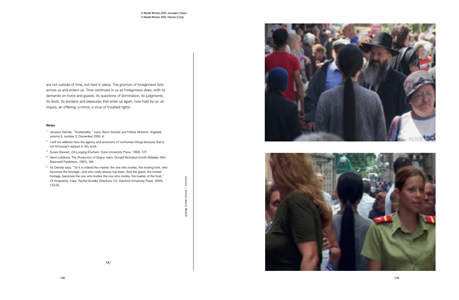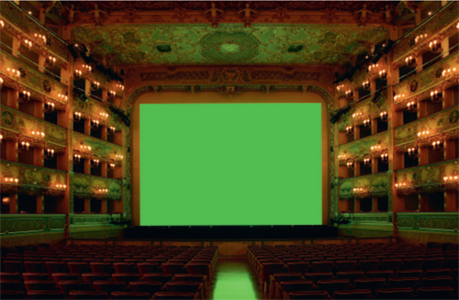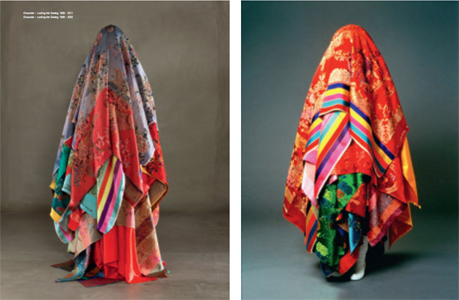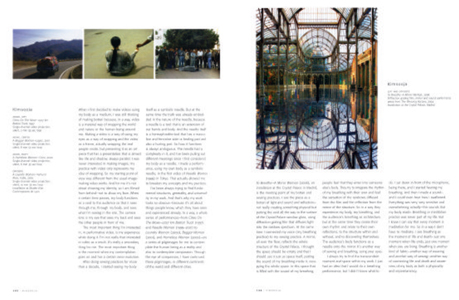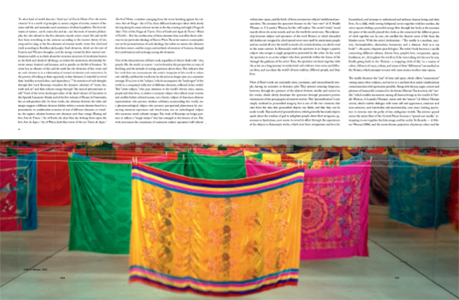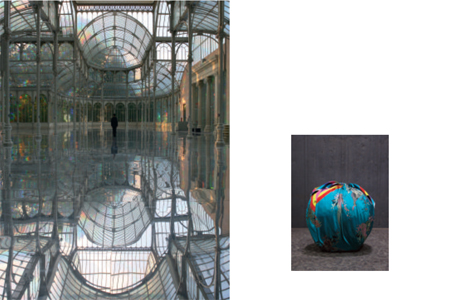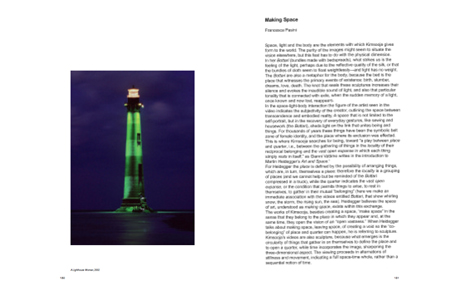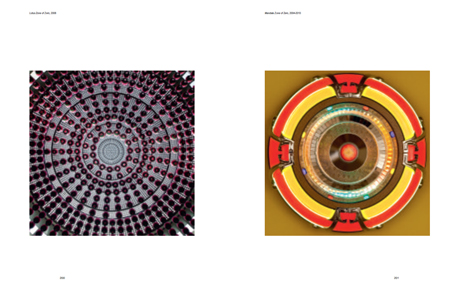Fully illustrated retrospective monograph based on Kimsooja's project presented at the Korean Pavilion of the 55th Venice Biennale in 2013, with numerous newly commissioned and re-published texts.
The notion of bottari (bundle) as a whole and totality and the concept
of sewing have been the central components of Kimsooja's work for over three
decades. Posing various questions about the formal aspects of tableau,
sculpture, object and installation, bottari encompasses issues of body, self
and others and the relationship of yin and yang to life and death. Bottari
explores problems of location and dislocation, migration, exile, and war,
while posing existential and cognitive questions in space and time.
Approaching the architecture of the Korean Pavilion as a bottari, the
division between nature and the interior space is wrapped with a
transluscent film, treating the windows as the skin of the pavilion that
diffracts the natural sunlight into rainbow spectrums of light, as it
showers the interior space.
The intensity of the light in the pavilion will correspond to the daily
movement of the sun rising to its setting across the Korean
Pavilion—which is located right next to the Laguna di
Venezia—transforming the space into a transcendental
experience—folding and unfolding the phenomenon of light.
To Breathe: Bottari presents the empty space of the Pavilion,
inviting only the bodies of the audience to encounter the infinite
reflections of light and sound. The artist's amplified inhaling, exhaling
and humming performance sound (
The Weaving Factory,
2004–2013) fills the air, transforming the pavilion into a breathing
bottari.
Simultaneously, the artist extends the experience of light and sound by
creating an anechoic chamber. A space in complete darkness that absorbs all
audio waves, leaving nothing but the sound of the viewer's own body,
To
Breathe: blackout (2013) creates a soundless dark void of
infinite reflection of self: a black hole.
The artist invites audiences to be the live and active performers,
experiencing a personal sensation and awareness that reveals the extremes of
light and darkness, sound and soundlessness, the known and the unknown. This
installation questions visual knowledge as the known and darkness as the
unknown—that originates from human ignorance—through two visual
extremes that are connected as part of a whole. The Korean Pavilion will
become a physical and psychological sanctuary, questioning the conditions of
civilization in this era.
Including texts by
Dan Graham, Yongwoo Lee,
Michel Mossessian, Seungduk Kim (commissioner), and an interview with
Kimsooja, the fully illustrated monograph which accompanies the exhibition
also features re-published texts by Sang-hwan Bak, Ingrid Commandeur, Ricky
D'Ambrose, Doris von Drathen, Bernhard Fibicher, Antonio Geusa, Jonathan
Goodman, Steven Henry Madoff, Leigh Markopoulos, Rosa Martinez, Laeticia
Mello, Hyungmin Pai, Kimsooja, Sung Won Kim, Robert C. Morgan, Francesca
Pasini, Oliva Maria Rubio,
Barry Schwabsky, Susan Sollins, the late
Harald
Szeemann, and Hoi-seok Yang.
Kimsooja (born 1957 in Taegu, Korea, lives and works in New York, Paris
and Seoul) is an internationally acclaimed conceptual multi-media artist.
Addressing issues of the
displaced self and others, the artist's work
combines
performance,
video,
photo and installation using sound, light and
Korean bedcovers. Kimsooja investigates questions concerning the
conditions of humanity, while engaging issues of aesthetics, culture,
politics, and the environment. Kimsooja explores
materiality/immateriality, mobility/immobility, by non-making and
non-doing, which inverts the notion of the artist as the predominant
actor. The artist's journey evolves with the continuous unfolding of her
concept of Bottari (bundle) and the notions of Needle and Mirror.



